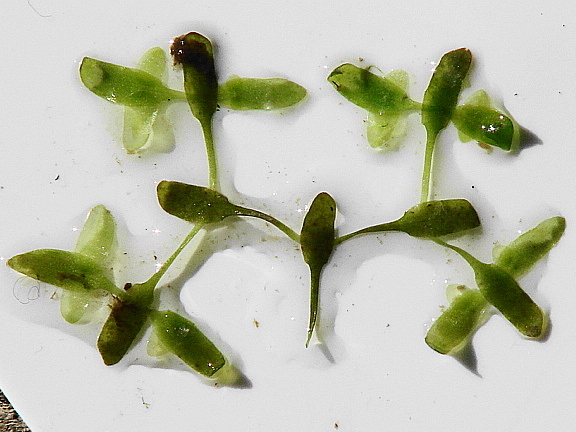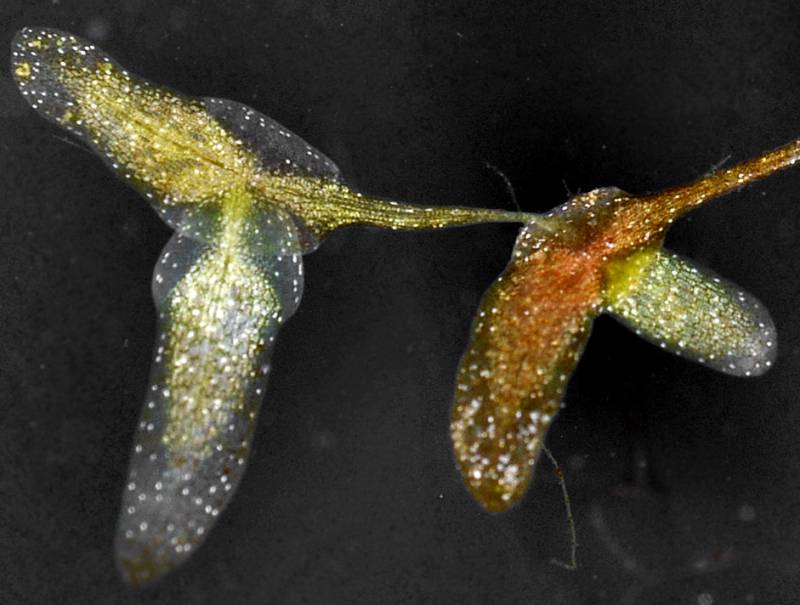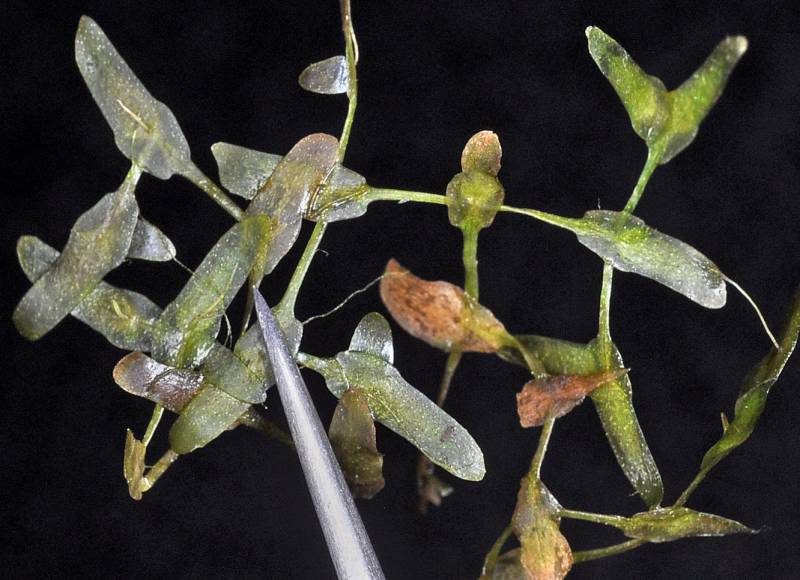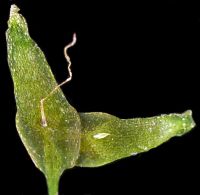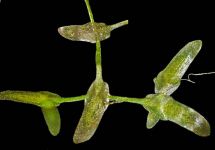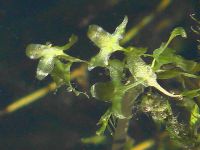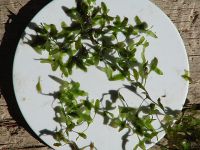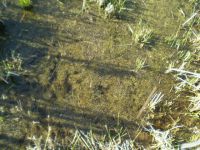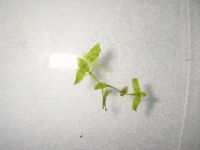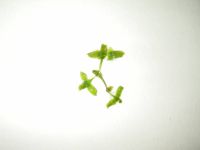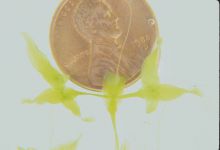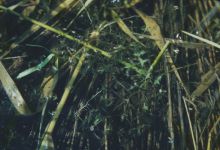Distribution: Occurring on both sides of the Cascades crest in Washington; Alaska to California, east across much of North America to the Atlantic Coast; cosmopolitan.
Habitat: Quiet streams and standing fresh water.
Flowers: July-September
Origin: Native
Growth Duration: Perennial
Conservation Status: Not of concern
Pollination: Flies
Monoecious, fleshy, colonial perennials without stem or leaves, the plant a free-floating or submersed, oblong-elliptic to elliptic-lanceolate body 6-12 mm. long, with an equally-long, stalk-like base, the bodies tending to remain connected and forming large mats.
None
Plants rarely found in flower, reproducing vegetatively; flowers usually 3, 2 staminate and 1 pistillate, together in a marginal cleft of the body, the staminate a single stamen with a 2-celled anther, the pistillate a single carpel with a 1-celled ovary.
Fruit a utricle.
Publication: Sp. Pl. 2: 970. 1753.
PNW Herbaria: Specimen records of Lemna trisulca in the Consortium of Pacific Northwest Herbaria database
WA Flora Checklist: Lemna trisulca checklist entry
OregonFlora: Lemna trisulca information
E-Flora BC: Lemna trisulca atlas page
CalPhotos: Lemna trisulca photos

